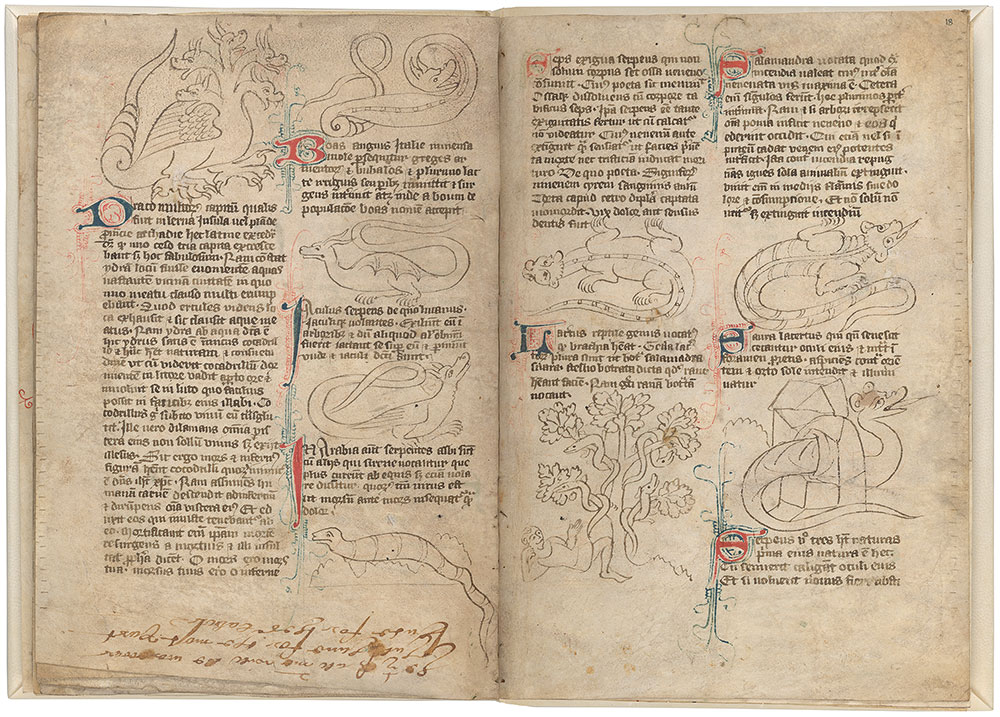
Fountains Abbey bestiary
Gift of Alastair Bradley Martin, 1958
Left Page (Fol. 17v)
The Hydra: The hydra—a snake with regenerating heads that was associated with Hercules—is one animal the bestiary tells us is not real.
Boa: The boa is described as a large Italian snake whose name derived from its supposed habit of attacking cattle. The prominent teeth shown here illustrate the medieval understanding of this snake’s nature: rather than squeezing its victims to death, the boa fastens itself onto cows’ udders and sucks them dry.
Javelin: Though its wings are pictured folded to its sides, the serpent depicted here was thought capable of flying at deadly speeds and thus was called a “javelin.” The bestiary explains that javelins like to hide in trees and launch themselves at their unsuspecting prey below.
Siren: The siren is a serpent thought to inhabit Arabia. White-skinned and capable of flying swifter than a horse, the siren also possesses fast-acting poison that kills its victims before they feel pain.
Seps: The glum-looking wingless serpent at the bottom of the page is a very small snake called a seps, whose venom was reputed to dissolve both flesh and bones (its name is related to the word “septic”). The seps is associated with another venomous serpent called the dipsas, which is so small it cannot be seen when stepped on, and thus is left unpictured.
Right Page (Fol. 18r)
Lizard: Classified as a reptile rather than a serpent because of its four legs, the lizard pictured here may be a botrax, characterized by its frog-like face, or perhaps it is a stellio, also mentioned in the text, and named after the star-like pattern of colorful dots along its back.
Salamander: The bestiary claims that if a salamander creeps into a tree, its venom will infect all the fruit, and may kill anyone who eats it, such as the poisoned victim beneath this infested tree. Salamanders were also legendary for their ability to withstand and even extinguish fire.
Saura: The saura, pictured here, is a type of lizard said to lose its vision with age, but which can cure its blindness by gazing toward the rising sun through a crack in a wall.
The Nature of Serpents: This illustration of a section on the “nature of serpents” visualizes how a snake molts: it sloughs off its skin by scraping its body against the walls of a narrow slit in a rock (or, in this case, a gate) as Christians are urged to slough off their sinful selves with Christ’s help.
